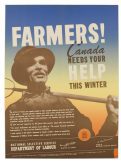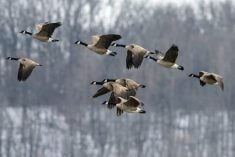A Manitoba Forage Council program that helps alfalfa growers pinpoint the optimum time to cut their crop is now underway in the province.
The Green Gold project disseminates a status report on the progress and maturity of Manitoba’s alfalfa crop to forage growers, dairy farmers and cattle producers. Interested farmers can access the information on the forage council website or receive an e-mail of the reports.
The reports begin after the May long weekend and usually run until the middle of June, said John McGregor, program coordinator.
Read Also

Women who fed a nation
More than 40,000 young women supported the war effort between the 1940s and early 1950s, helping grow and harvest crops amid labour shortages. They were called Farmerettes.
“We put together a summary report, twice a week, up till first cut (of alfalfa),” he said.
McGregor and two colleagues take alfalfa samples across the province and submit them to a lab for testing.
Dairy farmers require alfalfa with a relative feed value (RFV) of 150 or higher, and the program is designed to identify the proper time to cut the crop to achieve that level.
“Depending on the year, the time when the alfalfa reaches that optimum stage can vary (by three weeks),” McGregor said.
Farmers use reports from their region to make a decision about cutting.
“A farmer, by looking at our reports … can say the alfalfa will be ready for cutting at this optimum stage around this date,” McGregor said. “They’ll know that a week or 10 days in advance so they can start getting ready.”
Beef and sheep producers can also use the information to decide when to cut their crops to achieve a particular RFV.
The Green Gold program is funded by Dairy Farmers of Manitoba, Feed-Rite Grunthal, Pioneer Hi-Bred Ltd./Marc Hutlet Seeds Ltd., Northstar Seed Ltd., Southeastern Farm Equipment, BrettYoung, Central Testing Lab and Niverville Credit Union.
Cutting remains a few weeks away, but McGregor is concerned about this year’s alfalfa crop.
The crop was 10 to 11 inches tall before the May long weekend and slightly ahead of normal. However, a warm March followed by a cool April has altered plant development.
“The main stems that have come up are short, but I’m seeing a lot of new growth coming in from the bottom,” he said. “Because of this … there will be a lot of leaves in there and therefore the RFV will be fairly high, given that we’ve got a short crop.”
For more information, contact McGregor at jbmcgee@shaw.ca.















